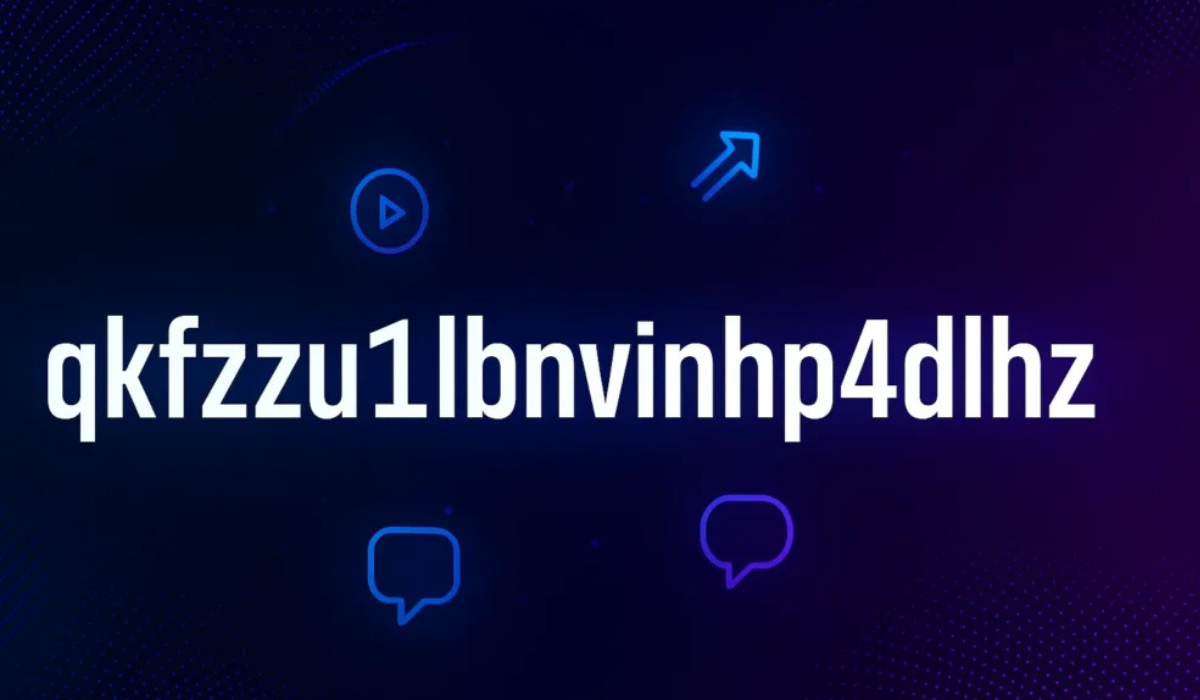
qkfzzu1lbnvinhp4dlhz – The Enigmatic Code Disrupting Digital Spaces
In a world where digital identifiers and encrypted strings dominate back-end systems, few have drawn as much curiosity as qkfzzu1lbnvinhp4dlhz. At first glance, it looks like a meaningless sequence—a blend of lowercase letters and numbers with no clear pattern. But look deeper, and you’ll discover how strings like qkfzzu1lbnvinhp4dlhz play a crucial role in the background of modern tech infrastructure.
Whether you’re a developer, cybersecurity enthusiast, or simply a curious observer, understanding why such sequences exist can open your eyes to how digital systems really operate.
What is qkfzzu1lbnvinhp4dlhz – A Breakdown
The keyword qkfzzu1lbnvinhp4dlhz is a type of unique alphanumeric string often used in systems that require secure identification, token generation, session management, or database referencing. It’s not meant to be memorable—it’s meant to be unique, collision-resistant, and sometimes even encrypted.
These identifiers are commonly found in:
-
API tokens
-
Database record keys
-
Cloud storage references
-
Encrypted user session strings
-
Hashes and salted values in authentication
Why qkfzzu1lbnvinhp4dlhz Matters in Modern Tech
At first glance, qkfzzu1lbnvinhp4dlhz may appear random. But in secure systems, randomness is power. Here’s why strings like this matter:
Uniqueness – No Duplicates, Ever
In distributed systems, uniqueness is non-negotiable. qkfzzu1lbnvinhp4dlhz can be generated as a UUID-style string, helping ensure that no two users, sessions, or objects are assigned the same identifier.
Security – Shielding Sensitive Data
Unlike predictable usernames or numeric IDs, strings like qkfzzu1lbnvinhp4dlhz don’t give away any usable information. If a malicious actor sees such a string, they gain nothing. That’s why systems use them for secure links and authorization tokens.
Speed – Indexing and Query Efficiency
Database engines can index long strings like qkfzzu1lbnvinhp4dlhz efficiently using hashing techniques. This helps large systems retrieve information faster—even across millions of entries.
Where You Might Encounter qkfzzu1lbnvinhp4dlhz
You won’t typically see qkfzzu1lbnvinhp4dlhz on a user interface, but you might encounter it in:
-
URL slugs that link to hidden or secure content
-
Logs from web servers or API gateways
-
Debug consoles during app development
-
File references in cloud platforms like AWS S3 or Firebase
If you’re building or using a web application, these strings are quietly doing work behind the scenes—ensuring stability, accuracy, and security.
Is qkfzzu1lbnvinhp4dlhz Human-Readable – Not Exactly
No, and that’s the point. Human-friendly identifiers are great for branding or navigation, but qkfzzu1lbnvinhp4dlhz is about function over form. Its complexity reduces guessability, brute-force risks, and misidentification.
That said, these strings are often mapped internally to readable labels in the user interface—ensuring user experience stays smooth while backend systems stay secure.
Generating Strings Like qkfzzu1lbnvinhp4dlhz
Strings like qkfzzu1lbnvinhp4dlhz are typically created through:
-
Hash functions (SHA-256, bcrypt, MD5 for non-sensitive use)
-
UUID libraries in languages like Python, Java, or Node.js
-
Token generators used in authentication systems
-
Salted combinations of data and random values
Each method serves a slightly different purpose, but they all share one goal—generating a reliable, non-repeating string.
How to Use qkfzzu1lbnvinhp4dlhz Safely
If you’re working with data that includes identifiers like qkfzzu1lbnvinhp4dlhz, follow these best practices:
-
Never expose them publicly unless necessary
-
Store them securely and encrypt at rest when needed
-
Rotate tokens or IDs periodically if used for authentication
-
Use HTTPS when transmitting them across networks
These steps ensure the integrity and security of the systems relying on such strings.
Final Thoughts – The Hidden Power of qkfzzu1lbnvinhp4dlhz
While it may look like a random mess, qkfzzu1lbnvinhp4dlhz is a silent workhorse in the digital realm. It represents how modern systems prioritize security, precision, and scalability through sophisticated identifiers.
Next time you come across a string like this in a log, link, or code snippet, remember—it’s not noise. It’s structure, built to hold the internet together behind the scenes.
Leave a Reply